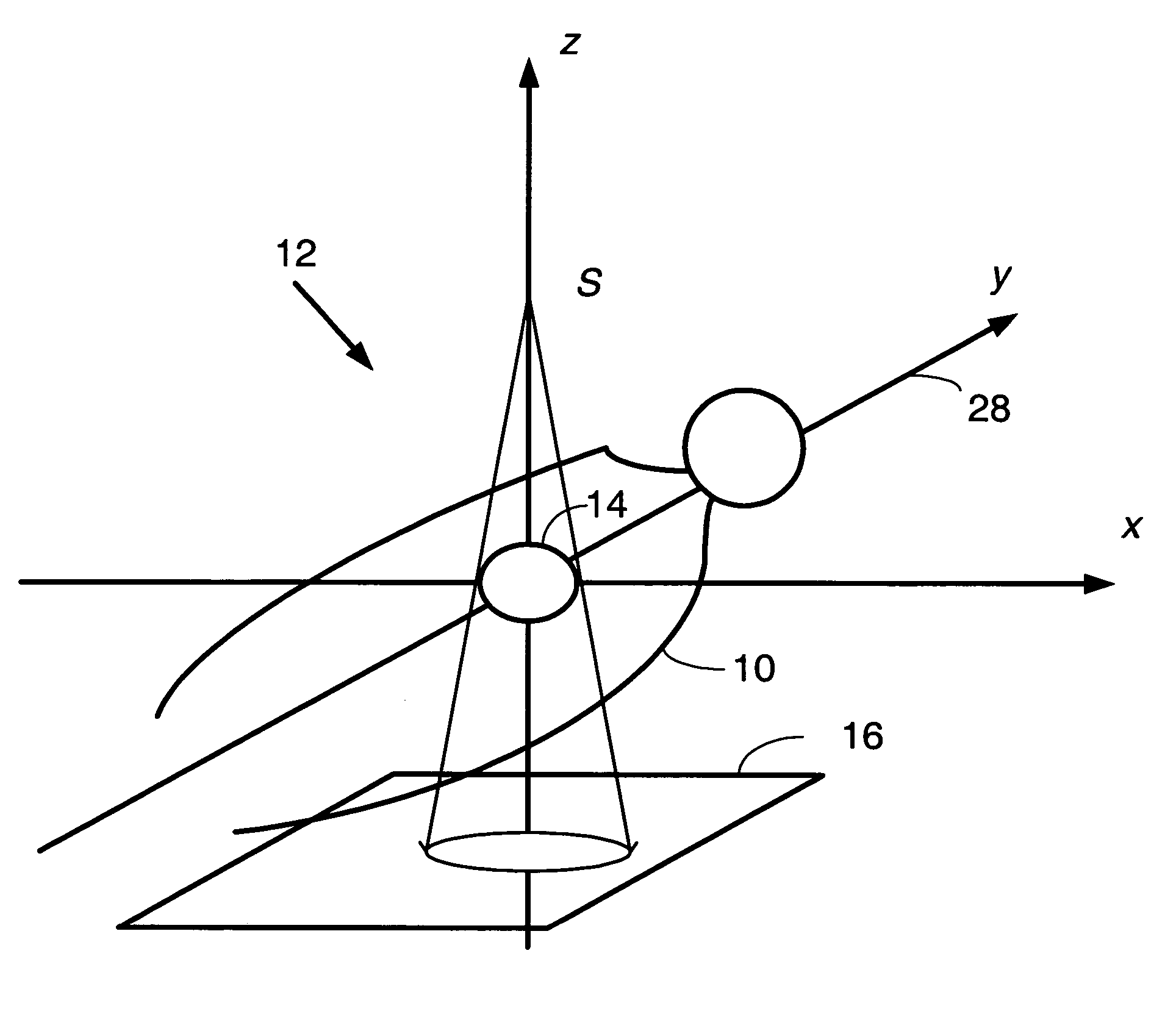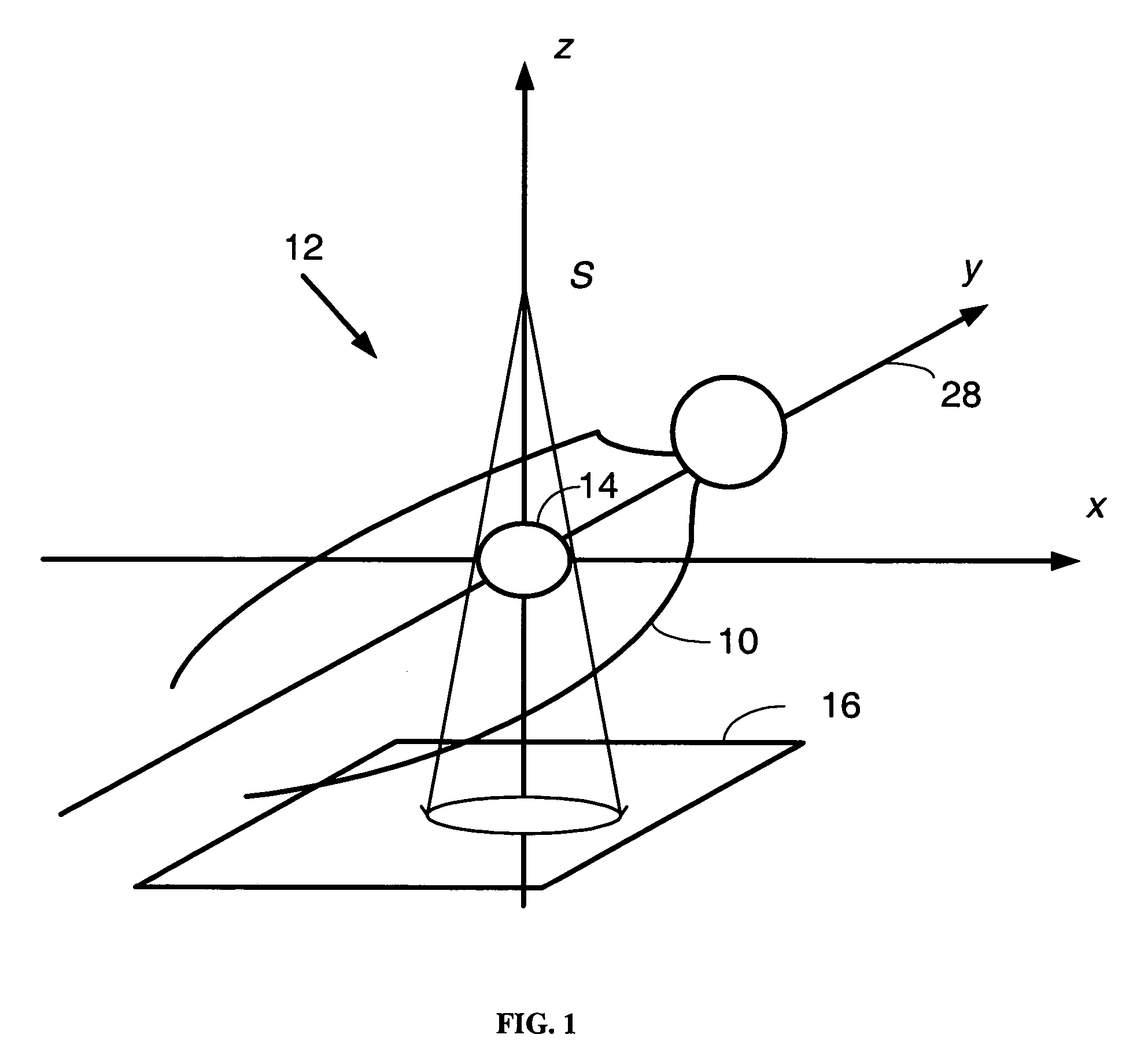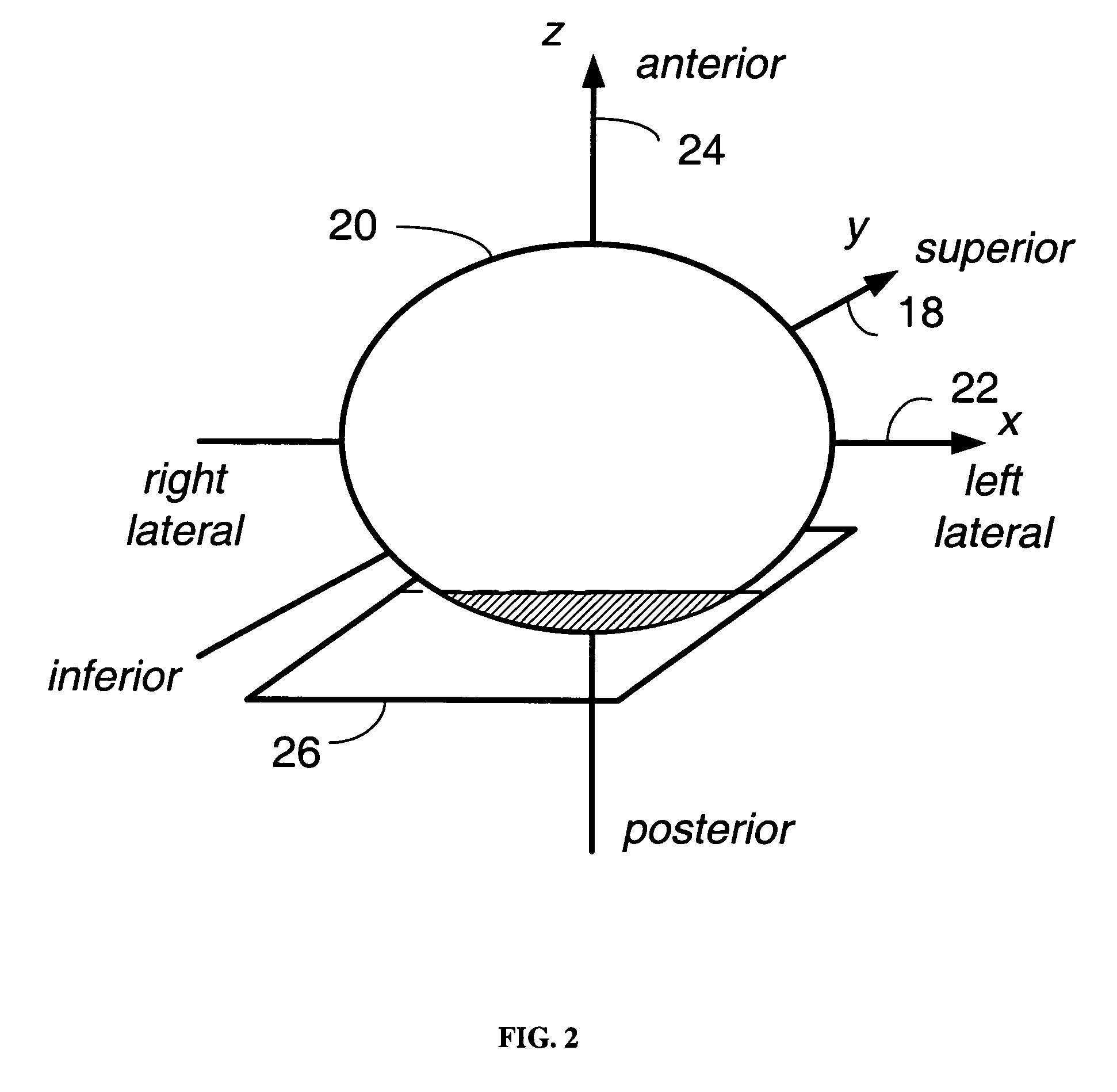Registration of three dimensional image data with patient in a projection imaging system
a technology of imaging system and patient, applied in the field of three-dimensional image data registration with patient in a projection imaging system, can solve the problems of difficult for a physician to become or remain oriented in a three-dimensional setting using a single-plane image projection display
- Summary
- Abstract
- Description
- Claims
- Application Information
AI Technical Summary
Benefits of technology
Problems solved by technology
Method used
Image
Examples
Embodiment Construction
[0023]A method is provided for determining a transformation of a three-dimensional pre-operative image data set to obtain a registration of the three-dimensional image data with a patient positioned in a projection imaging system. In one embodiment of the present invention, a 3D translation vector is estimated that places the 3D data volume in registration with the patient, as determined by registering at least two points on at least one projection obtained by imaging the patient in the projection system. As a result of the registration, it is possible to determine the location and orientation of a medical device with respect to the 3D data volume; this determination facilitates the navigation of the medical device in the patient. Registration enables shorter, more accurate and less invasive navigation to and within the organ of interest. In a typical implementation, registration may render unnecessary injection of contrast medium during the navigation.
[0024]FIG. 1 shows a subject 1...
PUM
 Login to View More
Login to View More Abstract
Description
Claims
Application Information
 Login to View More
Login to View More - R&D
- Intellectual Property
- Life Sciences
- Materials
- Tech Scout
- Unparalleled Data Quality
- Higher Quality Content
- 60% Fewer Hallucinations
Browse by: Latest US Patents, China's latest patents, Technical Efficacy Thesaurus, Application Domain, Technology Topic, Popular Technical Reports.
© 2025 PatSnap. All rights reserved.Legal|Privacy policy|Modern Slavery Act Transparency Statement|Sitemap|About US| Contact US: help@patsnap.com



